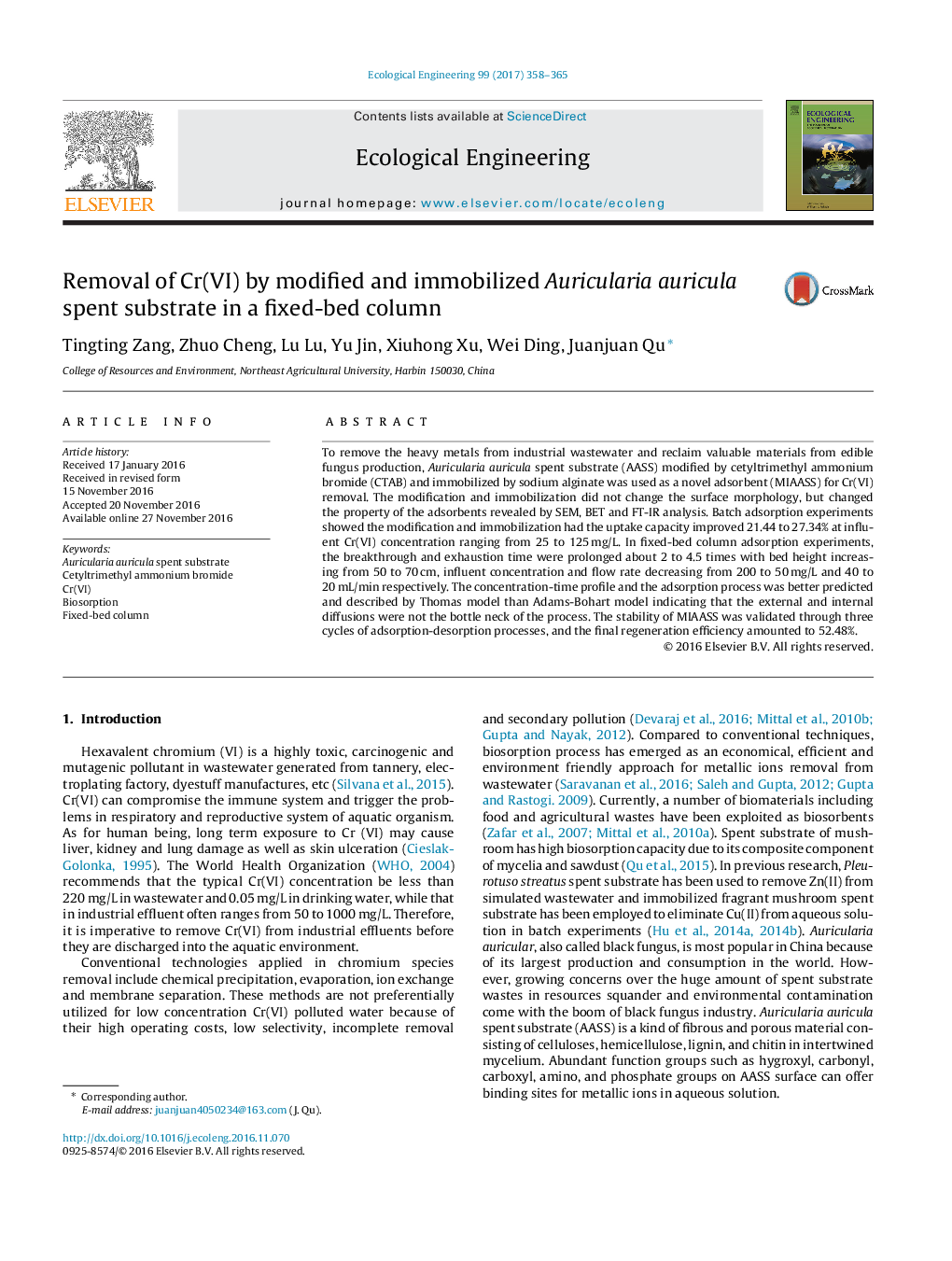| Article ID | Journal | Published Year | Pages | File Type |
|---|---|---|---|---|
| 5744004 | Ecological Engineering | 2017 | 8 Pages |
â¢Cr(VI) removal was conducted in fixed-bed column by the modified and further immobilized adsorbent of Auricularia auricula spent substrate.â¢IMAASS was characterized by SEM, BET and FTIR analysis.â¢The metal concentration, flow rate and bed height affect metal removal.â¢Thomas model is suitable for breakthrough prediction.
To remove the heavy metals from industrial wastewater and reclaim valuable materials from edible fungus production, Auricularia auricula spent substrate (AASS) modified by cetyltrimethyl ammonium bromide (CTAB) and immobilized by sodium alginate was used as a novel adsorbent (MIAASS) for Cr(VI) removal. The modification and immobilization did not change the surface morphology, but changed the property of the adsorbents revealed by SEM, BET and FT-IR analysis. Batch adsorption experiments showed the modification and immobilization had the uptake capacity improved 21.44 to 27.34% at influent Cr(VI) concentration ranging from 25 to 125Â mg/L. In fixed-bed column adsorption experiments, the breakthrough and exhaustion time were prolonged about 2 to 4.5 times with bed height increasing from 50 to 70Â cm, influent concentration and flow rate decreasing from 200 to 50Â mg/L and 40 to 20Â mL/min respectively. The concentration-time profile and the adsorption process was better predicted and described by Thomas model than Adams-Bohart model indicating that the external and internal diffusions were not the bottle neck of the process. The stability of MIAASS was validated through three cycles of adsorption-desorption processes, and the final regeneration efficiency amounted to 52.48%.
Graphical abstractDownload high-res image (96KB)Download full-size image
